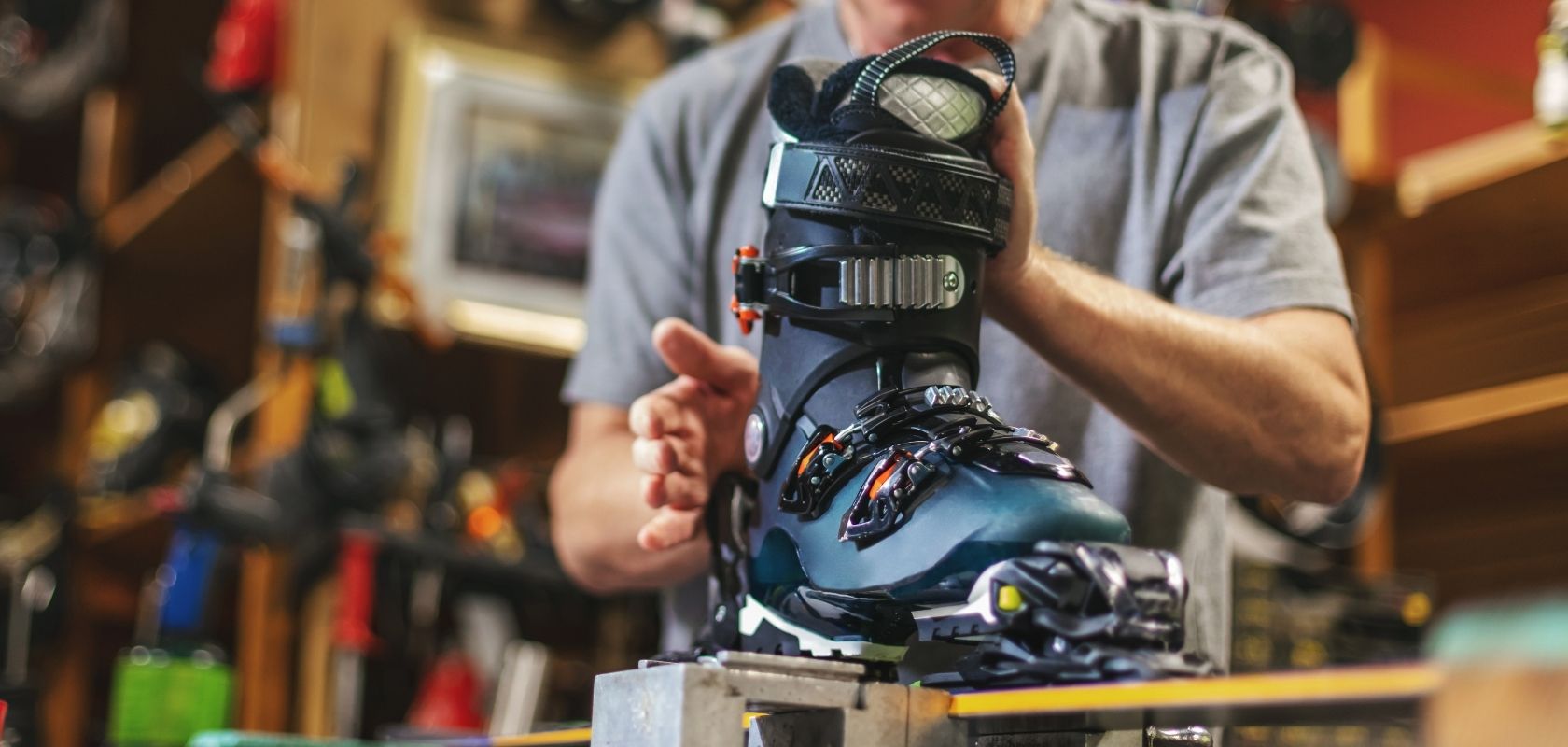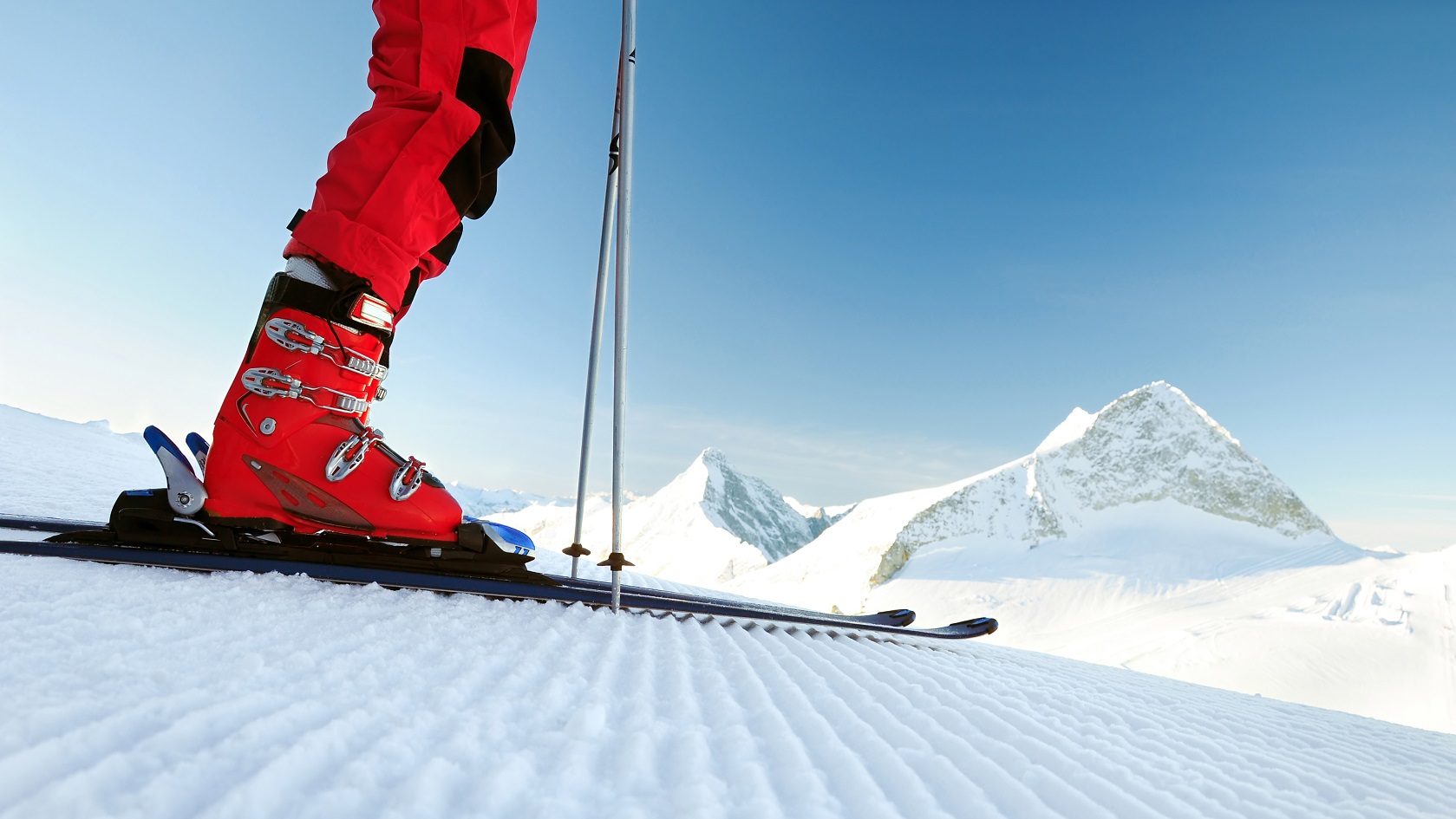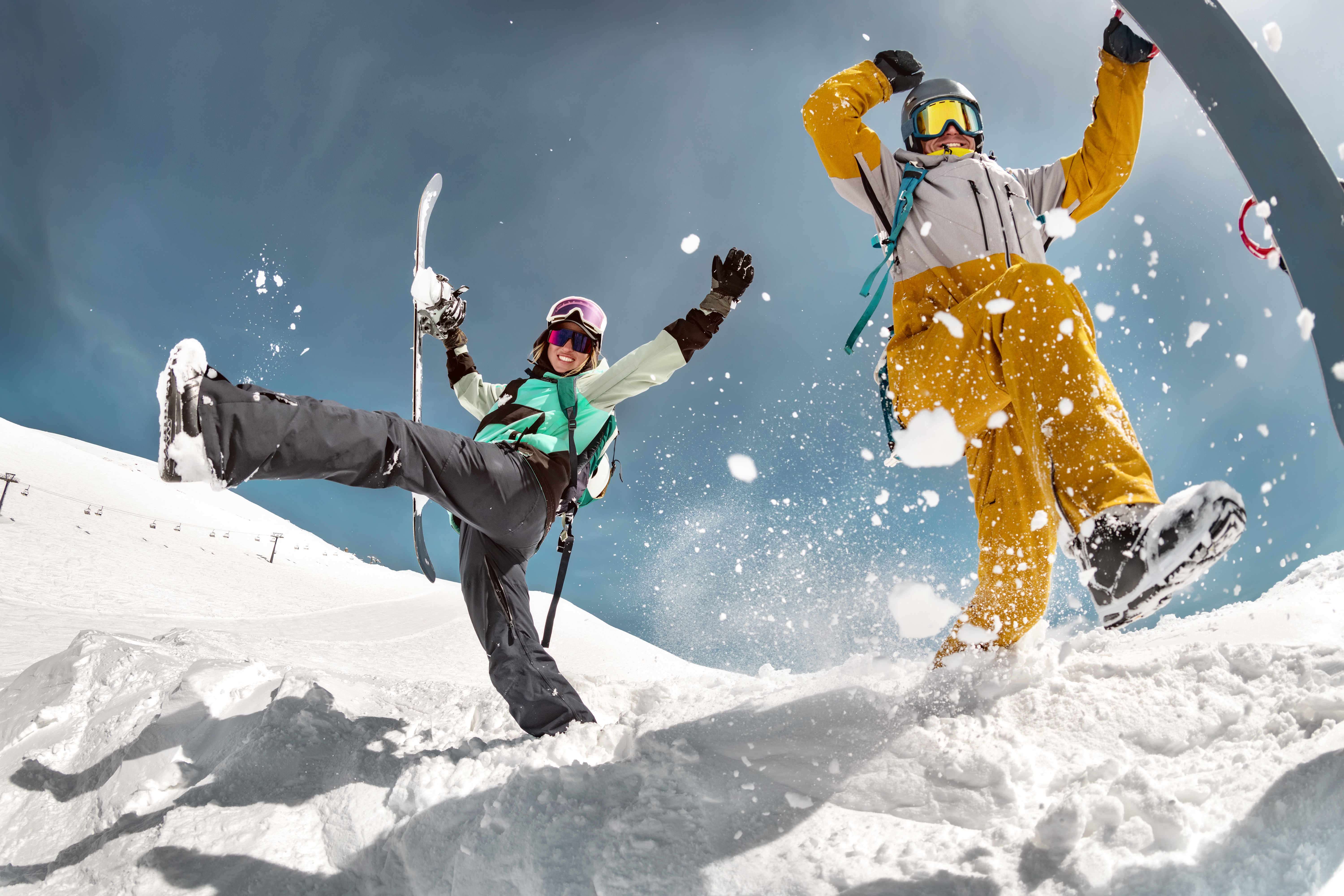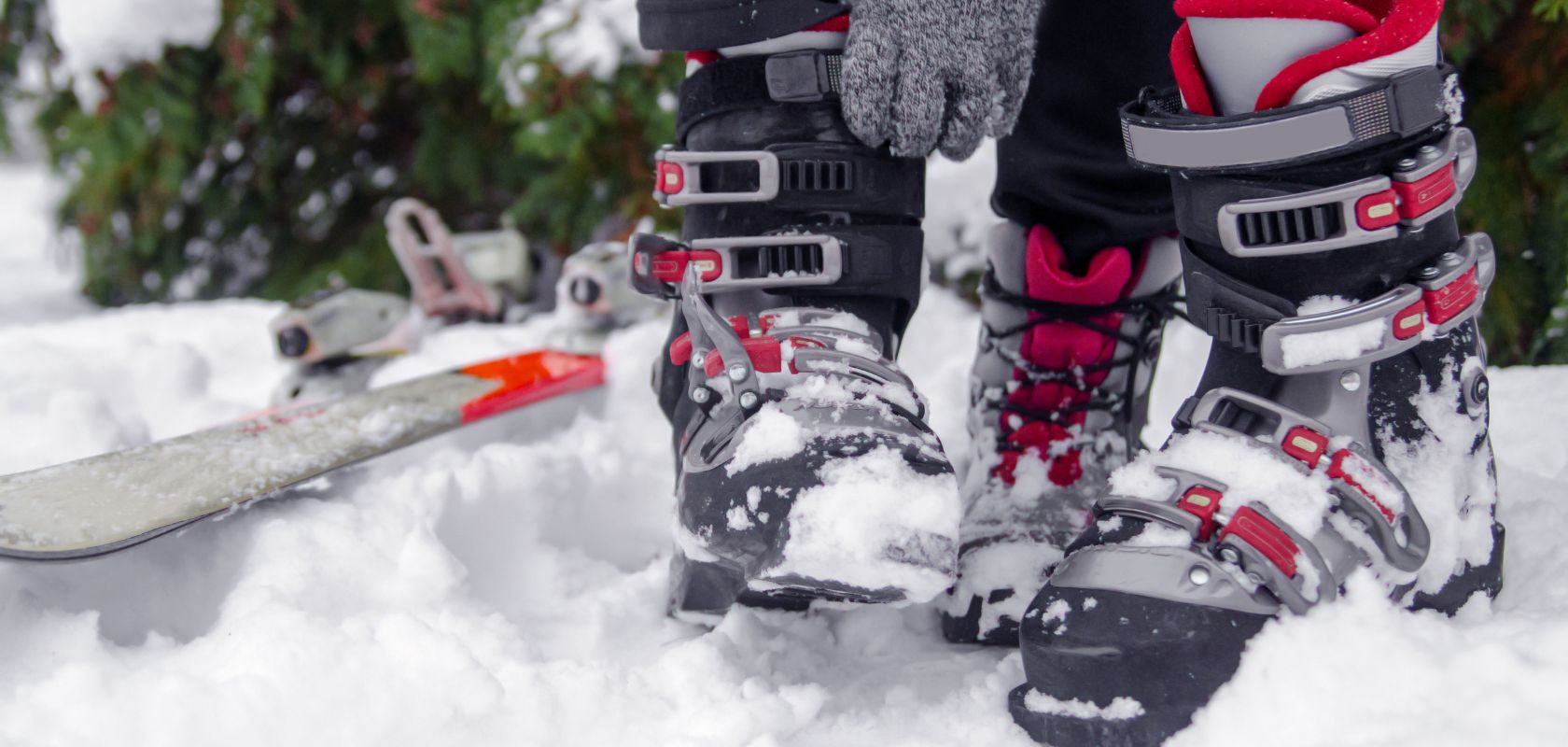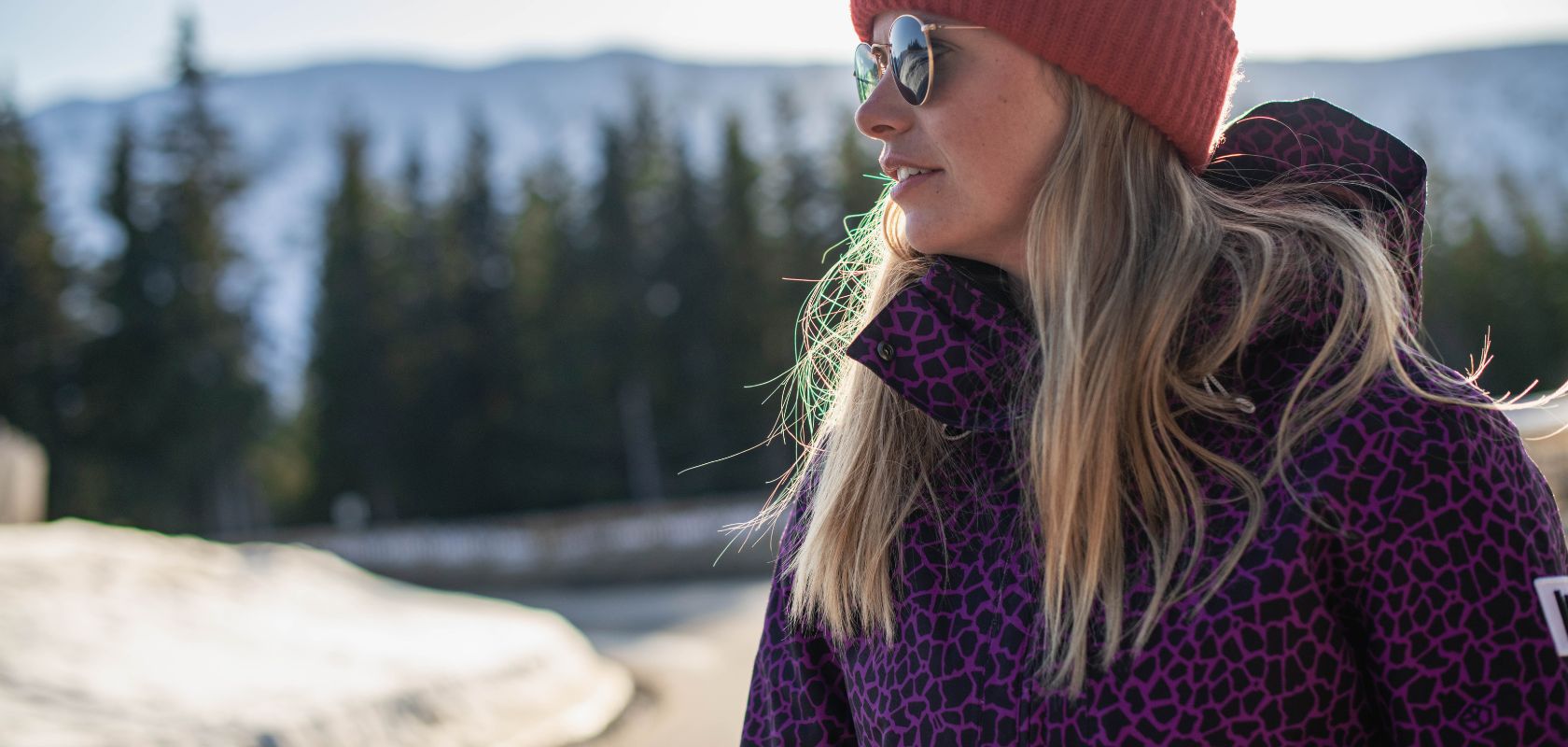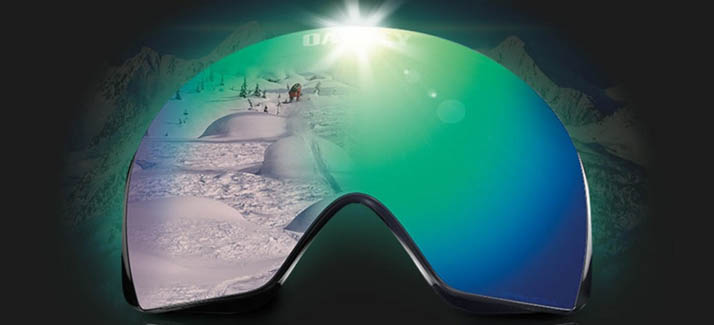Ski Boot Buying Guide
Finding the perfect ski boots is essential—more so than buying the flashiest skis or jackets. A well-fitted boot wraps your foot securely, minimising unwanted movement and offering precise control over your skis. This enhanced control lets you lean forward smoothly, initiate turns with accuracy, and tackle steeper terrain without fear. Conversely, oversized or loose boots can cause blisters, foot fatigue, or cramping. In extreme cases, poor boot fit can even result in falls due to a lack of responsiveness. We've put together our key things to look out for, but we always recommend visiting us in-store for a fitting with our experts.
Understanding Ski Boot Anatomy
Let’s decode the key terms you’ll encounter:
- Shell: The hard, outer plastic frame. Provides structure, protection and transfers energy from your legs to your skis.
- Liner: The padded, inner part of the boot that cradles your foot for comfort and insulation. Liners break in with use and can often be heat-moulded.
- Buckles and Straps: These fasten the boot securely. The more buckles, the finer the fit you can achieve.
- Last Width/Volume: The inside width across the forefoot, measured in millimetres.
- Flex Index: A numerical measure (usually 60-150) showing how stiff the boot is.
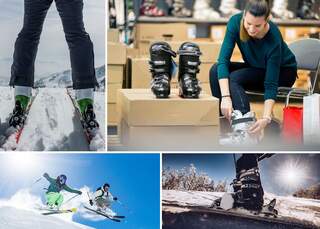
How to Choose the Right Size and Fit
Choosing the right size and fit ski boots requires you to consider various aspects of the boot, from its length and width to its volume. Taking the time to get this right will help ensure you stay comfortable on the slopes all day long. Ski boots don’t come in conventional shoe sizes. Instead, they are measured on an international standard scale called Mondo Point. Your Mondo Point size is the length of your foot in centimetres. So, if your foot is 26.5cm long, your Mondo Point size is 26.5.
When choosing your ski boots, you also need to consider the last, which is the width of your ski boots. Generally speaking, the tighter the boot across the last, the more precisely you can control your skis. However, this does come at a cost to comfort.
Step 1: Measure Your Foot (Mondopoint Sizing)
- Stand with bare feet or thin ski socks, placing your heel against a wall.
- Measure the length from the wall to your longest toe in centimetres—this is your Mondopoint size.
- Use a foot measuring device or brannock tool for higher accuracy.
Step 2: Assess Your Boot Width (Last) and Volume
- Narrow feet: Look for lasts of 97–100mm
- Average width: 100–102mm
- Wide feet: 102mm or wider
Your foot width, arch height, and instep form all influence your ideal fit. Narrow boots provide strong heel hold for advanced carving, while wide boots accommodate high-volume feet and reduce cramping for those with broader forefeet.
Step 3: Get a Professional Boot Fitting
A professional fitting includes a thorough assessment of your foot’s shape and volume, instep height, arch form, and calf muscle—details often overlooked when buying online. Boot fitters use specialised tools and can perform shell stretching, liner moulding, and even create custom footbeds. Boot fitting services often include not just a try-on session, but dynamic assessment (standing, flexing, pressure mapping) and personal consultations to ensure your boots work with your ski style.
Bonus Tips:
- Always wear proper ski socks for fitting—thin, technical socks will let the liner mould correctly.
- Avoid thick socks, which can bunch and reduce blood circulation.
- Consider if your foot shape requires special insoles for additional arch support.

Understanding Ski Boot Selection by Ability Level
When choosing ski boots, your ability level plays a pivotal role in finding the right balance between comfort, support, and performance. Manufacturers design boots to address the unique needs of beginners, intermediates, and advanced skiers—so it's essential to match your purchase to your skill set and goals.
Beginner Skiers
For beginners, ski boots should be soft, warm, and easy to adjust, making learning comfortable and less tiring. Prioritise a forgiving flex and simple buckles so you can focus on mastering basic skills and enjoying your time on the slopes.
Intermediate Skiers
Intermediate skiers need boots that combine comfort with increased support, enabling smoother turns and better control on various terrain. Look for a slightly stiffer flex and customisable features like heat-mouldable liners and micro-adjustment buckles to boost confidence and precision.
Advanced and Expert Skiers
Advanced and expert skiers benefit from high-performance boots with a firm flex, snug fit, and advanced customisation for maximum response and power. Prioritise boots that offer precise control, professional-level adjustments, and a close anatomical fit for challenging slopes and faster speeds.
Ski Boot Flex and Stiffness Explained
Understanding flex is crucial, as the right stiffness dramatically affects your skiing experience:
| Flex Index | Ability Level | Description |
|---|---|---|
| 60–80 | Beginners | Soft, forgiving boots emphasising comfort and ease of movement |
| 80–100 | Intermediates | Balanced support, better transmission, and confidence at moderate speed |
| 100–130 | Advanced/Expert | Stiff boots, maximum ski response, suitable for carving and speed |
| 130+ | Racers/Pro | Extremely stiff, direct energy transfer, built for aggressive skiing |
Tip: Lighter skiers or those who favour all-day comfort often prefer a softer flex, even at advanced levels. Don’t be afraid to discuss your ability, strength, and skiing style with an expert fitter.
How Flex Impacts Performance
A boot that’s too stiff will make it difficult for lighter skiers to balance and control, while a boot that’s too soft may feel unresponsive at speed for heavier or advanced skiers. Flex isn’t just based on ability: factors include your weight, skiing style (aggressive vs. relaxed), and skiing terrain (hardpack piste vs. powder).
Boot Types: Which Is Best for Me?
Alpine / Downhill Boots
Alpine, or downhill, ski boots are the traditional choice for those who spend most of their time on groomed pistes and marked resort runs. These boots are designed to provide direct energy transfer between your leg and the ski, enhancing control and responsiveness for on-piste performance. With a stiffer shell and snug fit, alpine boots deliver strong support and precision, making them ideal for carving turns and handling higher speeds. Features often include multiple buckles for precise adjustment, comfortable liners, and durable soles specifically tailored for compatibility with traditional alpine bindings.
Freeride Boots
Freeride ski boots are built for adventurous skiers who love to explore both on and off piste, frequently venturing into untracked snow and challenging terrain. These boots combine the support and power of alpine models with added versatility—such as a walk mode and grippy soles—which make hiking and short climbs easier. Freeride boots tend to be a bit more flexible and comfortable while still ensuring reliable control on descents and variable snow conditions. They’re perfect for skiers seeking more freedom to roam and transition smoothly between resort runs and backcountry forays.
Touring / Backcountry Boots
Touring, or backcountry, ski boots are engineered for those who prioritise uphill mobility and lightness, often travelling far from lift-serviced slopes. These boots feature a lightweight design, walk/ski mode mechanism for a greater range of ankle motion, and rocker-style soles compatible with tech or frame bindings. Touring boots sacrifice some downhill rigidity for enhanced comfort and natural stride during ascents, making them the go-to choice for ski mountaineers and those who enjoy earning their turns. With customisable liners and adaptable shell construction, touring boots enable a tailored fit while supporting long days of climbing and skiing in remote mountain terrain.
Glossary of Key Ski Boot Terms
- Mondopoint: International centimetre-based boot sizing.
- Last: The internal width of the boot at the forefoot, measured in millimetres.
- Flex Index: Number indicating the stiffness of the boot shell.
- Liner: Soft, insulating interior layer that shapes to your foot for comfort.
- Power Strap: Velcro strap at the top of the boot, adding leverage for tightening and responsiveness.
- Custom Footbed: Insole tailored to your foot shape, providing extra support and alignment.
Discover Your Perfect Fit
FAQs
Always measure your feet in centimetres and use this length as your Mondopoint size. It’s crucial that ski boots feel snug—unlike everyday footwear, a little tightness is normal as the liner packs out with use. Never size up ‘for comfort’; loose boots reduce control and often cause pain.
Your toes should gently brush the front of the boot when standing, pulling back slightly as you flex forward. The fit should be snug around the heel and instep, with no pressure points or pinching.
Flex refers to how stiff the boot is when you lean forward. Higher numbers mean a stiffer boot—providing more direct energy transfer but requiring greater strength and technique. Beginners and lighter skiers generally need softer flex boots, while advanced and heavier skiers can benefit from stiffer boots for improved control at speed.
Yes. Women’s boots tend to have narrower heels, lower cuffs and shapes that accommodate female-specific calf and ankle anatomy for a better, more comfortable fit
Most modern boots allow for some degree of customisation—from heat-mouldable liners to specialist footbeds and boot shell adjustments—all aimed at securing the perfect fit for every foot shape
Ski boots generally last about 200 skier days, but liners may compress and lose their shape well before the shell wears out. Regularly inspect your boots for signs of wear such as lost support, cracked shells, or badly packed-out liners. Replacing boots or at least the liners as they start to degrade will ensure you maintain comfort and control on the slopes.
The best socks for ski boots are thin, technical ski-specific socks. Thick or cushioned socks can create pressure points, reduce blood circulation, and actually cause cold feet. Technical ski socks are designed to wick moisture, regulate temperature, and allow your boot liner to mould closely to your foot for optimal fit and performance.
Related Articles

Let us know you agree to cookies
We use marketing, analytical and functional cookies as well as similar technologies to give you the best experience. Third parties, including social media platforms, often place tracking cookies on our site to show you personalised adverts outside of our website.
We store your cookie preferences for two years and you can edit your preferences via ‘manage cookies’ or through the cookie policy at the bottom of every page. For more information, please see our cookie policy.

